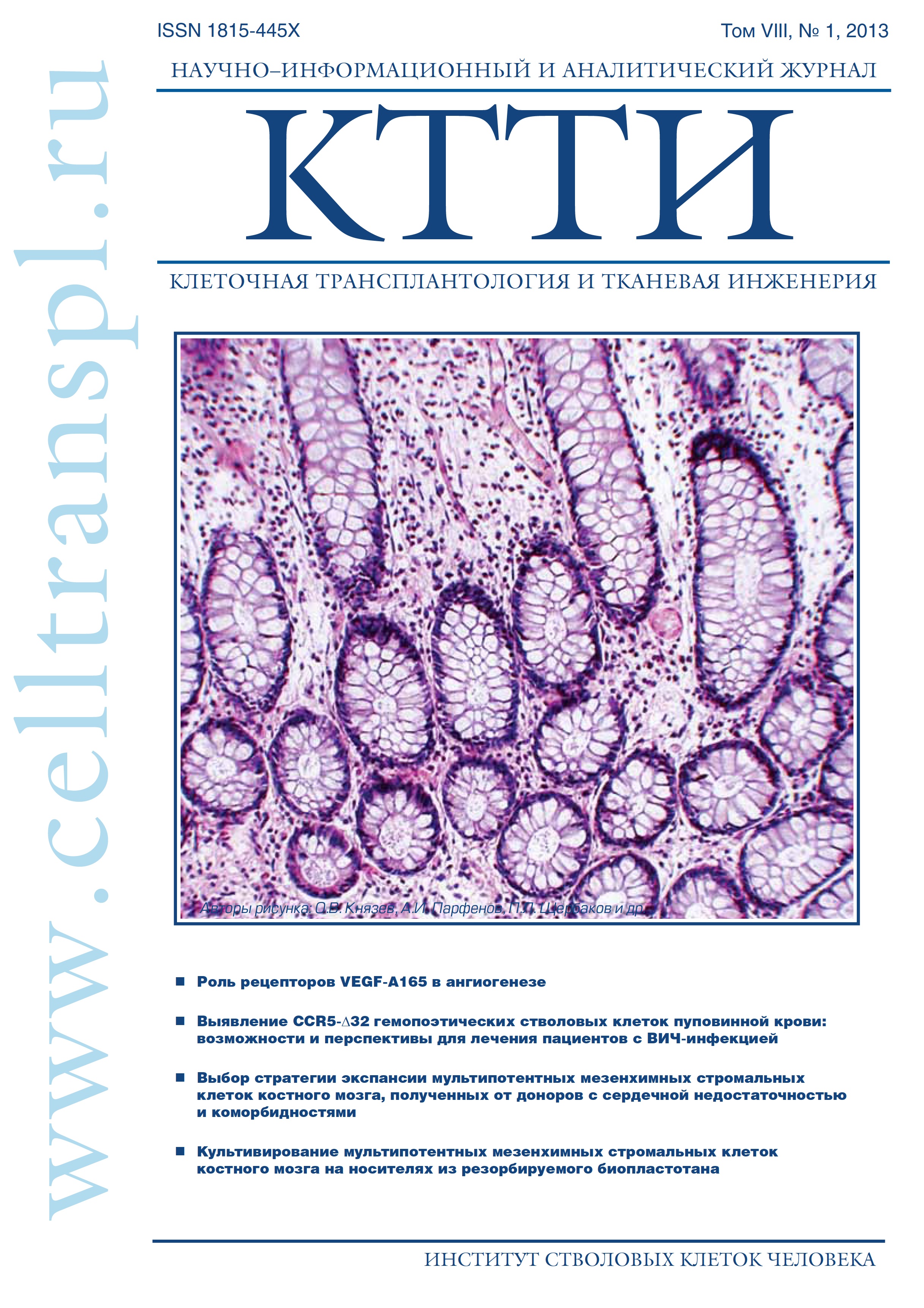Influence of porous three-dimensional implants from nitinol on culture of multipotent mesenchymal stromal cells
- Authors: Volchkov S.E1, Shishkovsky I.V1,2, Bairikov I.M1
-
Affiliations:
- Samara State Medical University, Samara
- P.N. Lebedev Physics Institute of RAS, Samara branch, Samara
- Issue: Vol 8, No 1 (2013)
- Pages: 51-56
- Section: Articles
- URL: https://genescells.ru/2313-1829/article/view/121609
- DOI: https://doi.org/10.23868/gc121609
- ID: 121609
Cite item
Abstract
The results of in vitro studies about biocompatibility of three-dimensional porous implants made of nickel-titanium (nitinol) are presented in this article. The porous scaffolds were created via layer-by layer selective laser sintering method and incubated with cultures of multipotent mesenchymal stromal cells. The microstructures of implants surface were observed by scanning electron and optical microscopy. It was shown that nitinol implants have neither toxicity nor other damage action on cells, but decrease the proliferative activity and migration ability of MMSC.
Full Text
About the authors
S. E Volchkov
Samara State Medical University, Samara
I. V Shishkovsky
Samara State Medical University, Samara; P.N. Lebedev Physics Institute of RAS, Samara branch, Samara
I. M Bairikov
Samara State Medical University, Samara
References
- Binyamin G., Shafi B.M., Mery C.M. Biomaterials: a primer for surgeons. Semin. Pediatr. Surg. 2006; 15(4): 276—83.
- Шишковский И.В. Лазерный синтез функциональных мезо-структур и объемных изделий. М.: Физматлит; 2009.
- Zinger 0., Anselme K., Denzer A. et al. Time-dependent morphology and adhesion of osteoblastic cells on titanium model surfaces featuring scale-resolved topography. Biomaterials 2004; 25(14): 2695—711.
- Шишковский И.В., Морозов Ю.Г., Фокеев С.В. и др. Лазерный синтез и сравнительное тестирование трехмерного пористого матрикса из титана и никелида титана как репозитария для стволовых клеток. Порошковая металлургия. 2011; 50(9/10): 42—57.
- Волчков С.Е., Тюмина О.В., Тороповский А.Н. и др. Сравнительная характеристика мультипотентных мезенхимальных стро-мальных клеток из разных источников. Клеточная трансплантология и тканевая инженерия 2009; [3): 8—9.
- Salamon A., Toldy E. Use of mesenchymal stem cells from adult bone marrow for injured tissue repair. Orv. Hetil. 2009; 150(27): 1259—65.
- Bain B.J. Bone marrow aspiration. J. Clin. Pathol. 2001; 54: 657—663.
- Kern S., Eichler H., Stoeve J. et al. Comparative analysis of mesenchymal stem cells from bone marrow, umbilical cord blood, or adipose tissue. Stem Cells 2006; 24: 1294—301.
- Nirmalanandhan V.S., Sittampalam G.S. Stem cells in drug discovery, tissue engineering, and regenerative medicine: emerging opportunities and challenges. J. Biomol. Screen. 2009; 14(7): 755—68
- Leong K.F., Phua K.S., Chua C.K. et al. Fabrication of porous polymeric matrix drug delivery devices using the selective laser sintering technique. Proc. Instn. Mech. Engrs. Part H. 2001; 215: 191—201.
- KanczlerJ.M.,Mirmalek-SaniS.,HanleyN.A.etal.Biocompatibility and osteogenic potential of human fetal femur-derived cells on surface selective laser sintered scaffolds. Acta Biomaterialia 2009; 5: 2063—71.
- Engel B., Bourell D.L. Titanium alloy powder preparation for SLS. Rapid Prototyping 2000; 6: 97—106.
- Das U.S., Wohlert M., Beaman J.J. et al. Processing of titanium net shapes by SLS/HIP. Mater. Des. 1999; 20: 115—21.
- Williams J.M., Adewunmi A.I., Schek R.M. et al. Bone tissue engineering using polycaprolactone scaffolds fabricated via selective laser sintering. Biomaterials 2005; 26: 4817—27.
Supplementary files










